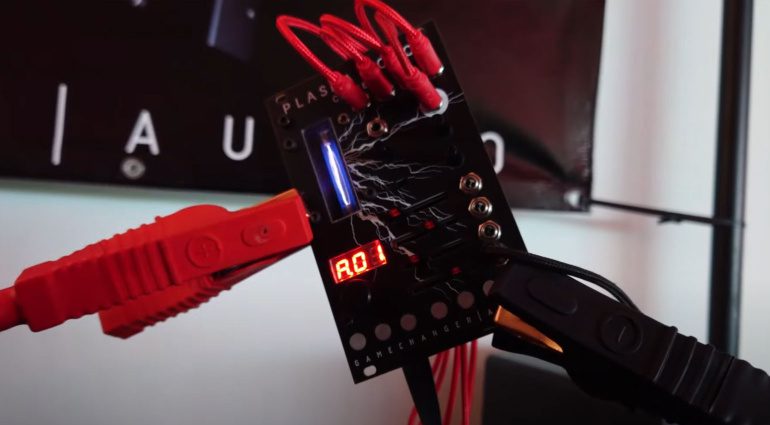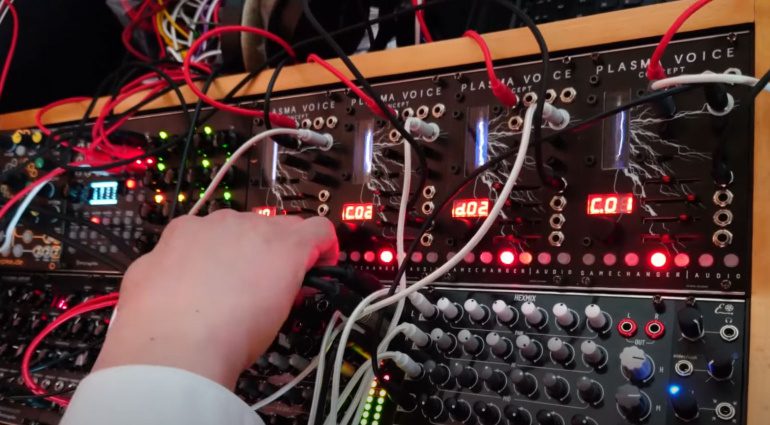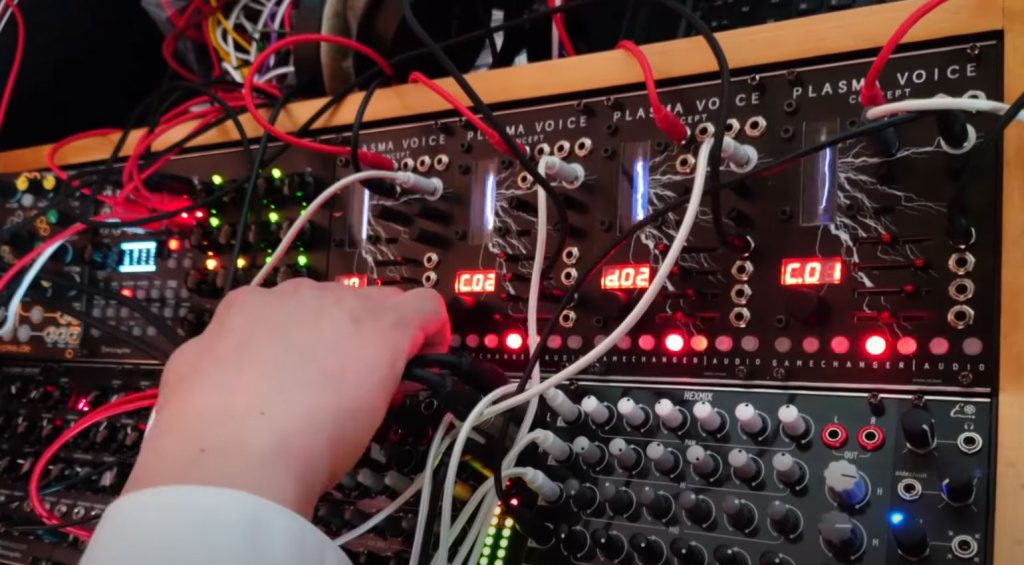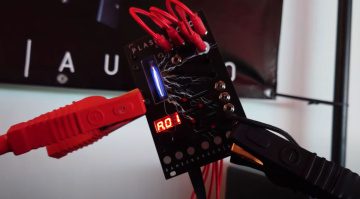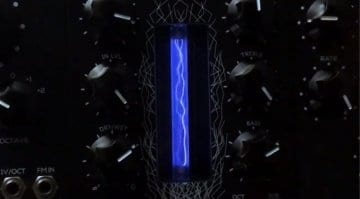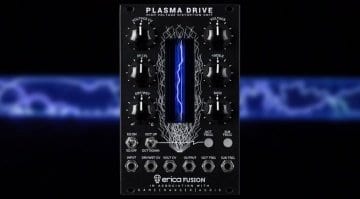Superbooth 23: Gamechanger Audio Plasma Voice
Gamechanger pulls their plasma tube circuit into the Eurorack space to explore the possibility of electrically discharged waveforms.
Plasma Voice
You can’t beat the visual excitement of a discharging plasma tube. Gamechanger Audio has used it to drive distortion and bit-crushing in both a pedal and a Eurorack module. But could it be used for generating sound rather than destroying it? The Plasma Voice is a proof of concept designed to generate percussive sounds, weird effects and even the possibility of melody.
It’s a great way to display it. A module is hanging in the air, apparently wired to a car battery (although I can see the ribbon cable out the back). And then there’s a row of buttons which send it triggers and spasms of voltage to force out some sounds.
According to Gamechanger Audio, the Plasma Voice is designed as a companion to the Motor Synth. Incidentally, the new Motor Synth MkII was on display and is now shipping. It’s all about unconventional sound sources, and this definitely fits the bill.
The Plasma Voice has a number of algorithms inside that tickle the tube in different ways. There’s talk of modulating the modulator’s base frequency and the carrier’s speed, which is how often the transformer discharges into the tube. There’s also a pitch envelope, decay and wave folding. And then you play with the relationship between them. The triggers are wired to envelopes which modulate different parts of the architecture.
Discharge
The sounds are immediately electrical; they have a physical edge that plays into exactly how you imagine it would be. You can hear the rasping sound of reality being destroyed. In the demo of the four modules running together, it has an extraordinary quality; I could feel my hair standing on edge with the static. There’s definitely a potential for melody amongst the discharge of energy. Exciting stuff!
It is still very experimental at this stage, but Gamecharger is keen to move it towards a product over the next few months.
You are currently viewing a placeholder content from YouTube. To access the actual content, click the button below. Please note that doing so will share data with third-party providers.

 4,0 / 5,0 |
4,0 / 5,0 | 